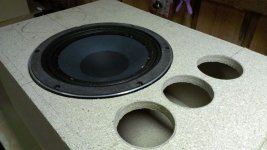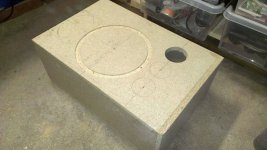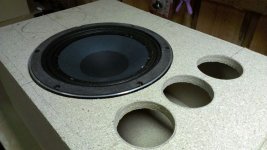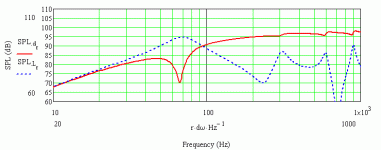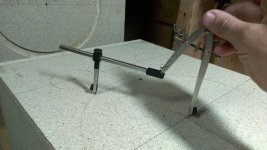Some while ago, I got my hands on a pair of vintage Beyma elements (10G150) with a claimed sensitivity of 99db which would be fun to build something with.
On the shelf, I have a compression driver (Faital Pro HF104) that might pair ok with a 10” driver. However, the Faital wants to be crossed over at 1,7 kHz which might be a bit higher than optimal as there might be a mismatch between polar patterns and the woofer might have started to beam at the cross-over frequency. Well, it’s not high-end, it is me having fun with what I’ve got lying around.
The woofer has a short X-max so it is probably intended for the midrange. I want it to be able to play low enough (in frequency) to work without a sub in a home environment so I am aiming no lower than -3db at 60Hz.
The box will be a mass-loaded transmission line (MLTL), or rather a bass reflex cabinet where the internal resonances are taken into account. What I've done is position the woofer in height to suppress internal resonances in the vertical direction and position the positions of the ports vertically in relation to the ports internal resonance to suppress that too. It shows quite well in the simulations using MJKs worksheets. I can’t really remember the exact position of the ports but the two simulations below show the difference in the predicted response due to the placement of the ports in the vertical direction.
Here are two simulations. The first (if I remember correctly) is with a slot port at the bottom. The resonances from the ports are disturbing the overall SPL from 300-1000 hz.
By moving the ports slightly higher and finding the right spot by trial and error, one can find a position which is more favourable and suppresses internal port resonances. Thus one does not need to rely completely on damping material to smoothen the response. Damping material also affects the bass output, which can be compensated with a larger box but this is my choice for this little project.
Here are some build pictures:
First a serious drawing...
